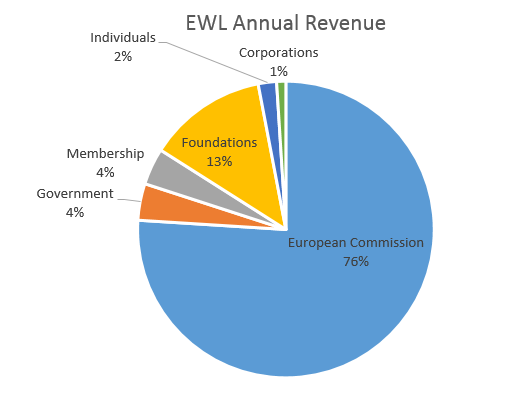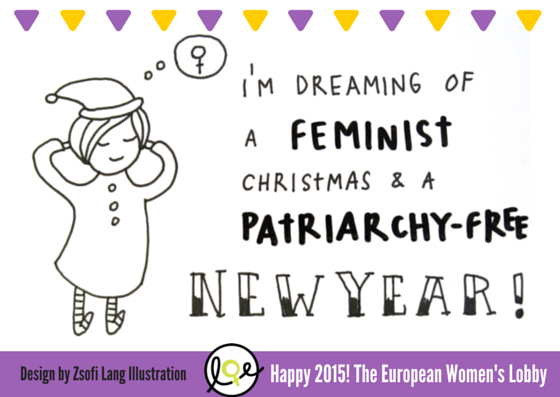Facts and figures about violence against women
- The Turkish Republic Prime Ministry Directorate General of the Status of Women has conducted a national research on domestic violence in Turkey in 2008. According to this research, 39 percent of women reported having experienced physical partner violence at any time in their lives.
- 15 percent of ever-married women in Turkey have experienced at least one act of sexual violence.
- Nation wide, the prevalence of experiencing one of either physical or sexual violence, or both, is 42 percent.
- The prevalence of physical violence is 39 percent and the prevalence of sexual violence is 15 percent. Source.
NGO cooperation
The women’s NGOs have been convening “General Assembly of Women’s Shelters” since 1998. In 1998, the women’s NGOs working in the field of violence against women decided to create an umbrella initative to share experiences and develop strategies that will enhance their work on combating violence against women.
The Women’s Platform Against Sexual Violence aims to establish rape crisis centers and was founded in February 2009. The platform aims to raise awareness about harrassment and rape, create deterrents and put an end to victimisation.
The following groups are members of Women’s Platform Against Sexual Violence:
- Amargi Kad?n Kooperatifi
- Antalya Kad?n Dan??ma ve Dayan??ma Derne?i
- Ba?kent Kad?n Platformu
- Buca Evka 1 kad?n Kültür ve Dayan??ma Evi (BEKEV)
- Çi?li Evka 2 Kad?n Kültür Evi (ÇEKEV)
- Çukurova Kad?n Platformu
- Ev Han?mlar? Dayan??ma ve Kalk?nd?rma Derne?i (EVKAD) Adana
- Ev Eksenli Çal??an Kad?nlar Dayan??ma A?? (HOMENET)
- Eski?ehir Demokratik Kad?n Platformu
- FeministBiz
- Günyüzü Kad?n Kooperatifi
- Kad?n Adaylar? Destekleme Derne?i- Ankara (KA-DER)
- Kad?n Dayan??ma Vakf? (KDV)
- Kad?nlarla Dayan??ma Vakf? (KADAV)
- Kad?n El Eme?ini De?erlendirme Derne?i (ELDER)
- Kad?nlara Hukuki Destek Merkezi (KAHDEM)
- Kad?n Merkezi (KAMER)
- Karadeniz Kad?n Dayan??ma Derne?i
- Mor Çat? Kad?n S???na?? Vakf?
- Taciz ve Tecavüze Son ?nsiyatifi
- UrfaYa?amevi Kad?n Dayan??ma Derne?i
- Van Kad?n Derne?i (VAKAD)
- Sabanc? Üniversitesi Cins Kulüp
- KESK’li Kad?nlar
- EHP’li Kad?nlar
- EMEP’li Kad?nlar
- Kaos GL Derne?i
- Lambdaistanbul LGBTT Dayan??ma Derne?i
The Platform to End Violence encompassing 236 women’s NGOs. Most of these NGOs work in the field of violence against women. The Platform has prepared The Draft Bill for the Protection of Women and Family Members from Violence.
National Legislation
Turkish Penal Code (law Nr.5237)
Offenses Against Sexual Immunity
Sexual abuse
Article 102
- Any person who attempts to violate sexual immunity of a person, is sentenced to imprisonment from two years to seven years upon compliant of the victim.
- In case of commission of offense by inserting an organ or instrument into a body, the offender is punished with imprisonment from seven years to twelve years. In case of commission of this offense against a spouse, commencement of investigation or prosecution is bound to complaint of the victim.
- If the offense is committed:
- Against a person who cannot protect himself because of corporal or spiritual disability,
- By undue influence based on public office,
- Against a person with whom he has third degree blood relation or kinship,
- By using arms or participation of more than one person in the offense,
the punishments imposed according to above subsections are increased by one half.
- In case of use of force during the commission of offense in such a way to break down victim’s resistance, the offender is additionally punished for felonious injury.
- In case of deterioration of corporal and spiritual health of the victim as a result of the offense, the offender is sentenced to imprisonment for not less than ten years.
- In case of death of vegetal existence of a person as result of the offense, the offender is sentenced to heavy life imprisonment.
Child molestation
Article 103
Any person who abuses a child sexually is sentenced to imprisonment from three years to eight years.
Sexual molestation covers the following acts;
- All kinds of sexual attempt against children who are under the age of fifteen or against those attained the age of fifteen but lack of ability to understand the legal consequences of such act,
- Abuse of other children sexually by force, threat or fraud.
- In case of performance of sexual abuse by inserting an organ or instrument into a body, the offender is sentenced to imprisonment from eight years to fifteen years.
- In case of performance of sexual abuse by antecedents, second or third degree blood relations, step father, guardian, educator, trainer, nurse and other persons rendering health services and responsible from protection and observation of the child, or by undue influence based on public office, the punishment to be imposed according to the above subsections is increased by one half.
- In case of execution of sexual abuse against the children listed in paragraph (a) of first subsection by use of force or threat, the punishment to be imposed is increased by one half.
- The provisions relating to felonious injury are additionally applied in case the acts of force and violence cause severe injury to the person subject to sexual abuse.
- In case of deterioration of corporal and spiritual health of the victim as a result of offense, the offender is sentenced to imprisonment not less than fifteen years.
- In case the offense results with death or vegetal existence of the victim, the offender is punished with heavy life imprisonment.
Sexual intercourse between/with persons not attained the lawful age
Article 104
- Any person who is in sexual intercourse with a child who completed the age of fifteen without using force, threat and fraud, is sentenced to imprisonment from six months to two years upon filing of a complaint.
- If the offender is older than the victim more than five years, the punishment to be imposed is doubled without seeking raise of a complaint.
Sexual harassment
Article 105
- If a person is subject to sexual harassment by another person, the person performing such act is sentenced to punishment from three years to two years upon complaint of the victim.
- In case of commission of these offenses by undue influence based on hierarchy or public office or by using the advantage of working in the same place with the victim, the punishment to be imposed according to the above subsection is increased by one half. If the victim is obliged to leave the business place for this reason, the punishment to be imposed may not be less than one year. Source.
Family Protection Law (Law Nr. 4320)
(Amended by the Law Nr.5636 and dated 26/04/2007)
Article 1- If a spouse or child or another member of the family living under the same roof or a family member regarding to whom a court decision on divorce has been rendered or who has the right to live separately or who is factually living separately despite being married is subject to abuse, and notification is made either by the victim or by the Public Prosecutor, in addition to the provisions of the Turkish Civil Code, taking into consideration the specific circumstances, the Judge of the Family Court may render one or more of the following decisions or take any other measures that are deemed appropriate ex-officio.
The culpable spouse or the other spouse can be ordered:
- Not to use violence or threatening behaviour against the family members,
- To be removed from the shared dwelling and to allocate this dwelling to the other members
of the family and not to approach the dwelling occupied by these individuals together or separately or their place of work, - Not to damage the property of the family members,
- Not to cause distress to the family members,
- To surrender any weapon or other similar instruments, if exists, to the police;
- To neither arrive at the dwelling or place of work of the victim of violence while under the
influence of alcohol or other intoxicating substances nor use such substances in these places, - To apply to a health centre for examination or treatment.
The time period stipulated for the application of the above mentioned provisions cannot exceed six months and the spouse using violence or the other family members shall be warned
on the issue that in the case of violation of the measures rendered in the judgment he/she will
be arrested and he/she will be sentenced to imprisonment.
If the spouse or the other family member who is using violence is the person who at the same
time is the provider of or contributor to the family’s livelihood, the judge, by taking into consideration of the living standards of the victims, may decide on temporary alimony even without request provided that no decision on maintenance had been rendered in accordance with the provisions of the Turkish Civil Code priorly.
For the applications or executive proceedings for execution of the judgments rendered within
the scope of this Law shall be free of charge.
Article 2- A copy of the protection order shall be submitted to the Chief Public Prosecutor’s Office by the court. The Chief Public Prosecutor’s Office shall monitor the application of the order through the police.
In the event of the order being implemented, the police, without the need for the victim to submit a written application, shall conduct an investigation ex-officio and transfer the documents to the Chief Public Prosecutor’s Office within the shortest possible time.
The Chief Public Prosecutor’s Office shall file a public lawsuit at the Magistrates Court against the spouse or other family members who do not abide by the order.
Even if the act constitutes another offence, the spouse or other family members who have not abided by the protection order shall be sentenced to imprisonment for a term of three to six months.
Issues regarding application of this Law shall be regulated by by-law.
Clause 3- This Law comes into effect from the date on which it is promulgated.
Clause 4- The provisions of this Law are implemented by the Council Ministers. Source.
Other resources
- ?stersek Biter: “Namus” Ad?na ??lenen Cinayetler 2011 Raporu, KAMER, 2011
- Fark Ederek Ço?almak ?çin… Kamer’in ?iddet Konusunda Çal??ma Yöntemleri, KAMER, 2007
- ?stersek Biter: “Namus” Ad?na ??lenen Cinayetler 2006 Raporu, KAMER,2006
- Suçlu Kim? “Güneydo?u ve Do?u Anadolu Bölgelerinde Namus Kisvesi Alt?nda ??lenen Cinayetler ile Mücadelede Kal?c? Yöntemler Geli?tirme Projesi” 2005 Raporu, KAMER, 2005
- “Ke?ke” Dememek ?çin, “Namus” Ad?na ??lenen Cinayetler 2004 Raporu, KAMER, 2004
- ?iddete Kar?? Anlat?lar / Ayakta Kalma ve Dayan??ma Deneyimleri, Mor Çat? Yay?nlar?, Ocak 2009
- Soru ve Yan?tlarla Erkek ?iddetine Kar?? Kad?n Dayan??mas?, Mor Çat? Yay?nlar?, Haziran 2008
- ?iddetten Uzakta Bir S???nak Nas?l kurulur? Nas?l Yürütülür?, Mor Çat? Yay?nlar?, Aral?k 2007
- Aile ?çinde Kad?na Yönelik ?iddet El Kitab?, Kad?n Dayan??ma Vakf? yay?nlar?, 2008
- Kad?na Yönelik ?iddet Veri Taban? Raporu, Kad?n Dayan??ma Vakf? yay?nlar?, 2007
- Türkiye’de kad?na Yönelik ?iddet, Ay?e Gül Alt?nay-Ye?im Arat, 2008, Metis Yay?nlar?
- Türkiye’de Kad?na Yönelik Aile ?çi ?iddet Ara?t?rmas?, Ba?bakanl?k Kad?n?n Statüsü Genel Müdürlü?ü, Ankara, 2009
- Aile ?çi ?iddetle Mücadele El Kitab?, Ba?bakanl?k Kad?n?n Statüsü Genel Müdürlü?ü, Ankara, 2009
- Kad?na Yönelik Aile ?çi ?iddetle Mücadelede Sa?l?k Hizmetleri el Kitab?, Ba?bakanl?k Kad?n?n Statüsü Genel Müdürlü?ü, Ankara, 2008
Contact
Songül Atak: E-mail: songulatak@hotmail.com; Tel: +90- 412 228 10 53;
Address: Aliemiri 3.Sk. Es-?al Apt. Kat:1 No:1 Yeni?ehir / D?YARBAKIR-TURKEY


